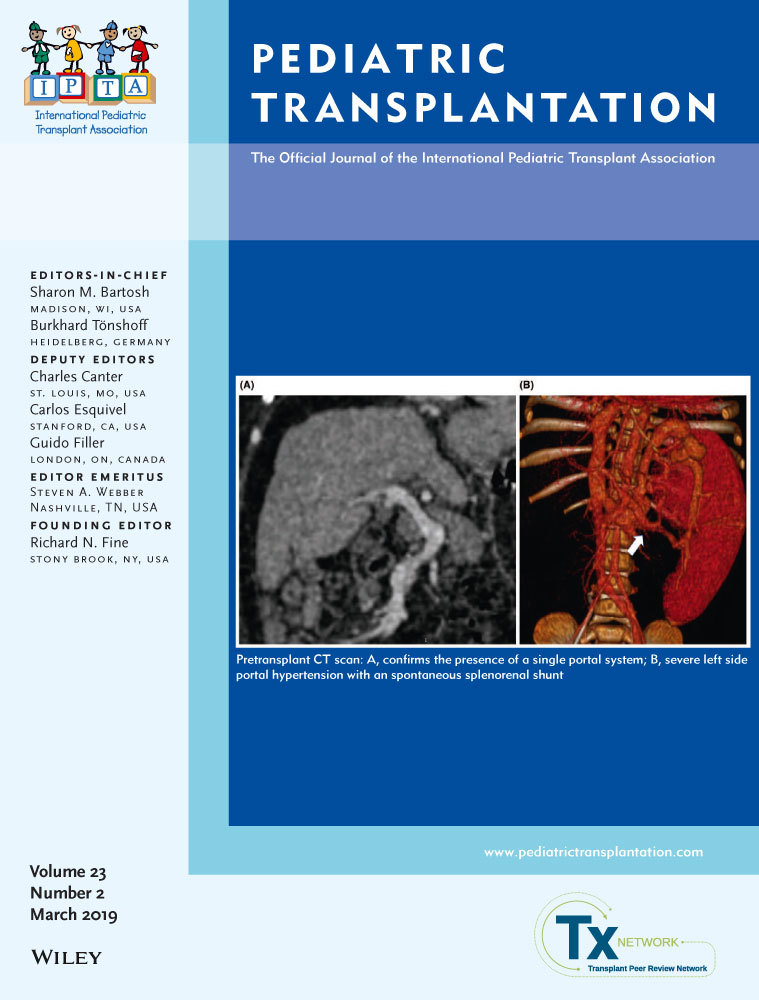Outcomes of kidney transplants in pediatric patients with the vertebral defects, anal atresia, cardiac defects, tracheoesophageal fistula, renal anomalies, limb abnormalities association
Abstract
In this single-center retrospective study, we analyzed kidney transplant outcomes in nine pediatric patients with VACTERL [vertebral defects, anal atresia, cardiac defects, tracheoesophageal fistula, renal anomalies, limb abnormalities] association—making this the largest study of its kind. Of 743 pediatric kidney transplant recipients at our center (1980-2017), nine had documented diagnoses of VACTERL association. All nine had congenital anorectal malformations and renal anomalies, five had vertebral defects, and one had a bifid thumb and tracheoesophageal fistula. Renal anomalies included dysplasia (n = 6), aplasia (n = 3), and horseshoe kidney (n = 2). Congenital lower urinary tract anomalies included neurogenic bladder (n = 6), obstructive uropathy (n = 4), anovesicular fistula (n = 1), rectourethral fistula (n = 1), and posterior urethral valves (n = 1). Age at transplant ranged from 1.2 to 15 years (mean, 7.3; standard deviation [SD], 5.5); 6 (67%) were male, and 3 (33%) were female; 6 (67%) had a living related donor, and 3 (33%) had a deceased donor. The overall graft survival rate was 78% (range, 1.5 to 25.2 years; mean, 10.5; SD, 8.9). One month post-transplant, one recipient died with a functioning graft. At 3.7 years post-transplant, one graft failed because of recurrent pyelonephritis. Post-transplant urologic complications included pyelonephritis (n = 6), vesicoureteral reflux (n = 5), and graft hydronephrosis (n = 4). We conclude that pediatric patients with VACTERL association can be safely transplanted—careful patient selection with vigilance and intervention for pre- and post-transplant urologic complications is essential.




